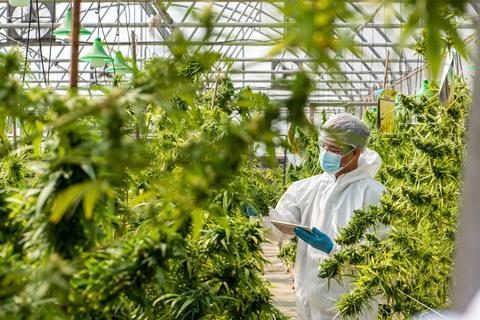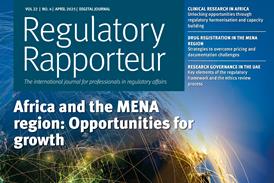The first in a four part series considering uses of medicinal cannabis
One of the most commonly proscribed drugs used throughout the world is cannabis. The drug has provoked both political discussion and public opinion. However, society’s attitude is polarised on the medical and recreational use of it.
Cannabis is a natural product and psychoactive drug from the plant, Cannabis sativa L. The plant is generally distributed and grows in temperate and tropical areas. Herbal cannabis consists of the dried flowering tops and leaves. Cannabis resin is a compressed solid made from the resinous parts of the plant, and cannabis (hash) oil is a solvent extract.
Cannabis has a vast number of active chemical constituents, with the two main being tetrahydrocannabinol (Δ9-THC) and cannabidiol (CBD), which have been studied more than others for their medicinal purpose.
THC is the major psychoactive constituent of cannabis and is considered responsible for giving so called “highs” to users of cannabis, whereas CBD is not considered psychoactive.

Historically, preparations derived from the plant, Cannabis sativa L. have been for medical use. In the past 20 years, there has been a re-emergence of cannabis and cannabinoids used to treat a variety of conditions, including chronic pain, cancer pain, depression, anxiety disorders, sleep disturbances and neurological disorders.
This resurgence coincided with renewed scientific interest in the medical use of substances found in the cannabis plant, namely cannabinoids.
Following on from this was the discover in the early 1990s, of a cannabinoid system in the human brain and body that was implicated in the control of important biological functions, such as cognition, memory, pain, sleep and immune functioning. However, the classification of cannabis as a drug without medical uses made it difficult to conduct clinical research.
The human brain and other organs contain naturally occurring cannabinoid receptors, as well as chemicals that bind to those receptors. This is called the endocannabinoid (EC) system, and it appears to be responsible for regulating the nervous system, including effects on pain, control of movement, sleep, mood, appetite, memory reproduction, and fertility.
The EC system also provides protection of nerve cells and a role in natural brain adaptability, as well as having a role in various metabolic, immune and inflammatory processes.
Plant cannabis may imitate the effects of the EC system, producing unpredictable pharmacological effects. Smoking cannabis induces THC to affect the EC system, rapidly binding to cannabinoid receptors throughout the brain and body. This interferes with the ability of natural cannabinoids to do their role of regulating communication between neurons, and consequently confusing the EC system.
As cannabinoid receptors are present in the human brain and other parts of the human body, the effects of THC can be extensive. THC can impair a person’s reaction time, judgement, memory and cause anxiety.
THC also affects the nucleus accumbens part of the brain that makes a person feel good and, for that reason, the sensation of being “high” is experienced. Nevertheless, gradually over a longer period of time, THC can alter the normal function of the EC system, which can lead to memory, addiction, and mental health concerns.
The safety of cannabis for medical use is not substantiated. There is insufficient data on its safety during long-term use for the treatment of chronic medical conditions, as descried above. There appears to be a lack of understanding between the public awareness of effectiveness and safety, and the regulatory requirement for scientific data which is mandatory to assess the safety, quality and effectiveness of cannabis for medical treatment.
Cannabis has potential therapeutic benefits but these need to be better defined through clinical research. The safety of cannabis as a medical treatment is not well characterised and, in particular, there is insufficient information on its safety during long-term use for treatment of chronic medical conditions, such as those for which there is a public interest.
The hype is building around a growing body of evidence regarding the effectiveness of cannabis, however the limitations of the scientific data should be understood. The effectiveness and safety of cannabis in a large number of medical conditions is not substantiated.
Prior to being made available to patients, a medicine is required to demonstrate that the benefits of treatment outweigh the risks, but few cannabis products have met these criteria. There appears to be a significant gap between the public perception of effectiveness and safety, and the position of many medical experts that further scientific research is required to determine the role of cannabis as a medical treatment.
Increasing access to cannabis may benefit individual patients that have an unmet medical need. The benefit/risk to the individual patient must be substantiated for medical purposes.
The next article in this series highlights the regulatory background — read it here.
Reproduced with the kind permission of Woodley BioReg — the views expressed in this article are those of the authors and do not represent those of Regulatory Rapporteur or TOPRA.


























No comments yet